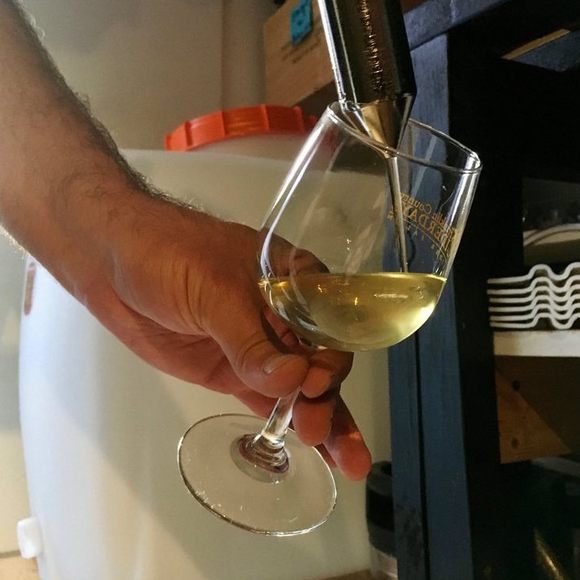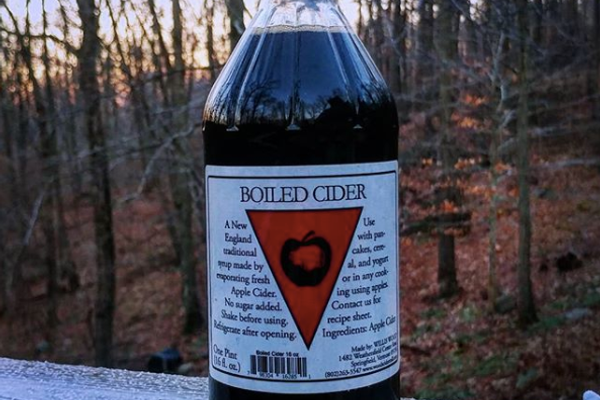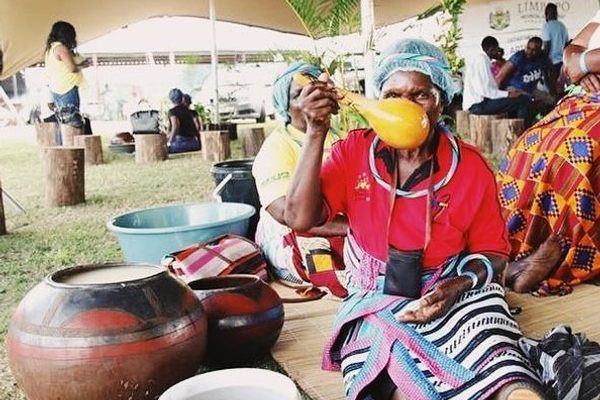If you’re looking to pour one out for Samuel Morse, inventor of the telegraph and codeveloper of Morse code, you might consider doing so with the boozy cider made from apples that grow by his grave. In Brooklyn’s Green-Wood Cemetery, a singular apple tree looms over the hillside where the Morse is laid to rest, and each year one special brew is made using its fruit.
After stumbling upon the tree, Jeremy Hammond, a former winemaker, decided to use his expertise to ferment the apples, creating the hard cider Malus Immortalis. Hammond, who makes the cider with his girlfriend, Joy Doumis, describes it as tasting like “mezcal eucalyptus.” While that may not sound like the sweet ciders most drinkers are used to, the brew is not only light, refreshing, and effervescent, but also more typical of the style made in Morse’s day, when people would make their own brews from homegrown trees.
In the modern-day United States, most apples grown commercially fall under the category of “dessert” and are created by grafting specific sweet apple cultivars onto growing rootstock. Cider-makers, however, claim the best ciders come from tart apples, which can be a difficult sell to growers, who often refer to these varieties “spitters.” But in the case of Hammond and Doumis’s cemetery cider, those spitters are crucial to creating its uniquely dry, almost winelike flavor.
While Malus Immortalis isn’t sold commercially, Hammond and Doumis host tours at Green-Wood, where they visit the apple tree and provide samples of their cider. Perhaps, Morse would prefer you spare no drops for him, but instead share this culinary creation with the living.
Where to Try It
-
Green-Wood Cemetery
500 25th St., Brooklyn, New York, 11232, United States
Written By
 Leigh ChavezBush
Leigh ChavezBush
Sources
- www.atlasobscura.com/articles/graveyard-hard-apple-cider-brooklyn-green-wood-cemetery
- www.green-wood.com/event/pouring-green-wood-2/
- www.brooklynpaper.com/stories/41/19/dtg-green-wood-cemetery-cider-makers-2018-05-11-bk.html
- treefruit.wsu.edu/varieties-breeding/rootstocks/
- drinks.seriouseats.com/2013/10/cider-apple-guide-which-apples-are-in-hard-cider-bittersweet-dabinett-yarlington-tremletts-nehou-ciders-to-try.html















